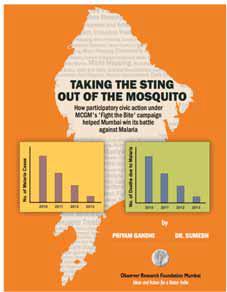
Terry Pratchett, in his book ‘Good Omens: The Nice and Accurate Prophecies of Agnes Nutter, Witch’ says, “the devil has all the best tunes”. The current health status of the Indian population may seem like it has improved over the years but the health scenario still looks grim with the emergence of newer diseases and public health threats, our inability to control communicable diseases, increase in the incidence of lifestyle disorders, insufficient health infrastructure, increasing drug resistance and somewhat rudimentary public health policies.
But as Terry Pratchett also goes on to say, “…But Heaven has the best Choreographer”. Let’s choreograph the dances well and see to it that it benefit the population and defeats the devil.
This is the best analogy that I can think of while explaining effective communication. In the health sector, we call it health communication. Health communication is a way of promoting health behaviours and attitudes, and sustaining them over a period of time aimed at positive health outcomes packaged in ways that the target population can relate to and comply with. It is a vast area with a lot of scope and indeed one of the most effective and proactive types of public health interventions; yet considered trivial and hence extremely neglected in the Indian context. If the length of study material is anything to go by, a discipline that is given two pages in a five-and-a-half-year course is obviously unimportant and irrelevant. As a student of medicine, this is the impression I was given about health communication. It was much later that I came to realise the importance of communication methods in public health practices, and the role it could play in alleviating health issues. It is time we change the choreography.
 Originally part of ‘Development Communication’, health communication was recognised as a discipline in itself much later. The term ‘development communication’ was coined by Nora C Quebral in 1972. Fraser and Respreto-Estrada’s book ‘Communication for Development—Human Change for Survival’ (1998) mentions, “the successes and failures of most development projects are often determined by two crucial factors — communication and people’s participation. Even though communication for development came into being in the 1960s, and has clearly shown its usefulness and impact in change and development, its role is still not understood and appreciated to the point that it is routinely included in development planning.” It is without doubt that this statement holds true even today for any development communication, especially in the case of health.
Originally part of ‘Development Communication’, health communication was recognised as a discipline in itself much later. The term ‘development communication’ was coined by Nora C Quebral in 1972. Fraser and Respreto-Estrada’s book ‘Communication for Development—Human Change for Survival’ (1998) mentions, “the successes and failures of most development projects are often determined by two crucial factors — communication and people’s participation. Even though communication for development came into being in the 1960s, and has clearly shown its usefulness and impact in change and development, its role is still not understood and appreciated to the point that it is routinely included in development planning.” It is without doubt that this statement holds true even today for any development communication, especially in the case of health.
In fact, the primary aim of this multifaceted discipline is to share health-related information with different audiences. The idea is to influence, engage and support individuals, communities, health professionals, special groups, policy makers and the public to champion, introduce and adopt, or sustain a behaviour, practice or policy that will ultimately improve health outcomes.
My experience in the sector reinforced my belief that India’s failure to leverage the potential of health communication has prolonged the misery of its people. Its failure is conspicuous both at the levels of strategisation and implementation. Although most policies and health programmes have a component on health promotion/communication, we have hardly seen results that can be notably attributed to this component.
 Around the globe, including India, health communication is often frowned upon rather than valued. Although health communication has been identified by various agencies, including the World Health Organization, as an essential part of public health, it continues to be neglected in professional, medical or allied health education. anglų kalbos pamokos ir kursai svetainėje intellectus.lt There are no undergraduate or post-graduate courses in India that focus on the subject. As a result, there is serious dearth of trained professionals in the field. The campaigns that are run in India, therefore, lack methodical approach, and most have failed to make the desired impact.
Around the globe, including India, health communication is often frowned upon rather than valued. Although health communication has been identified by various agencies, including the World Health Organization, as an essential part of public health, it continues to be neglected in professional, medical or allied health education. anglų kalbos pamokos ir kursai svetainėje intellectus.lt There are no undergraduate or post-graduate courses in India that focus on the subject. As a result, there is serious dearth of trained professionals in the field. The campaigns that are run in India, therefore, lack methodical approach, and most have failed to make the desired impact.
In a country like ours, where a ‘doctor’ is at times synonymous with a ‘clinician’, even public health does not get its due. Against this background, health communication tends to be seen as soft intervention, which garners less prestige than traditional activities or clinical treatments. Public health professionals assume that if services or ‘evidence-based’ information are made available, people will use them. Thus, the need for communication strategies is ignored.
Having said that, we must acknowledge that there have been a few successful health communication campaigns as well. Various national health programmes in India have recognized the need to integrate communication methods in interventions, albeit late. Some exemplary campaigns from the recent past are DOTS (Directly Observed Treatment Short-course), the Balbir Pasha campaign for HIV-AIDS awareness, the Balgam Bhai campaign for TB awareness and most importantly, the pulse polio campaign, which contributed immensely towards the eradication of the disease.
Media campaigns are part of health communication, not vice versa:
While the media plays a pivotal role in health campaigns, it is certainly not enough to bring about behavioural change, which is the ultimate aim of any health communication campaign.
 Although the work of journalists and academia in public health qualifies as health communication, they account for only one of the three important aspects of the discipline — Information, Education and Communication (IEC).
Although the work of journalists and academia in public health qualifies as health communication, they account for only one of the three important aspects of the discipline — Information, Education and Communication (IEC).
While most campaigns in India fall under the ambit of IEC, the term is now being replaced with Social and Behaviour Change Communication (SBCC). The difference between them lay in the outcome-oriented approach of the latter, vis-à-vis the dissemination-oriented method of the former.
So, while the media may act as an agent to educate through information dissemination, a lot more is desired to ensure that goals of such a campaign, which include behavioural changes, are fulfilled.
Despite my proximity with media professionals as a health communicator, my training in medicine leads me to believe that incomplete knowledge of health issues by journalists tends to do more harm than good. The measles-mumps-rubella (MMR) vaccine controversy created by the media in the 1990s in the UK is a classic example. In this case, wrong information was circulated by the media that MMR vaccine caused autism in eight children without any epidemiological evidence. This created fear among the parents as a result of which, the MMR vaccine coverage reduced considerably in the UK leading to more number of incident cases of measles. It was only after a period of time when the authorities addressed the issue that the vaccine coverage eventually increased.
While the media alone cannot be blamed of any such occurrences, it plays an important role given its vast outreach.
Machhru and Machchharman Campaigns:
In 2013, I got my first opportunity to work on a communication campaign for malaria awareness, anchored by the Municipal Corporation of Greater Mumbai (MCGM).
After developing a print campaign in 2011, Observer Research Foundation (ORF) Mumbai volunteered to make a video and an audio campaign again in 2013. We approached the MCGM after making five Public Service Announcement (PSA) films, which were taken up under the leadership of the then Additional Municipal Commissioner. This was the first ever video and radio campaign rolled out by the MCGM’s health department.
While two of the five videos were screened at almost all cinema halls across the city throughout the monsoons, the audio campaign, in the form of a musical jingle, was aired on popular FM channels. Machhru, the mosquito, became a popular household jingle, especially among schoolchildren. The message was reinforced through its catchy lyrics, which was used in the print material as well.
In 2014, we initiated yet another campaign for the civic body. This time around, we used a more scientific approach and put into practice some of the core theories of health communication. While working with health service providers, health workers and communities, the team studied social behaviors around specific and targeted campaigns. Our mascot Machchharman was archetypal of superheroes in popular stream. We used the mascot to outline citizens’ responsibilities in helping MCGM prevent the incidence of mosquito-borne diseases.
Let’s understand the two campaigns better in view of the core theories of health communication.
Thanks to our grassroots interactions and experiences from designing earlier campaigns, we knew we had to find the right target population. Our two-pronged strategy to make children the change agents, and to put the onus on people to control the disease, eased the MCGM’s stretched-and-strained delivery apparatus.
By now, increased budgetary provisions for SBCC by civic authorities had also opened up a whole gamut of popular media, unlike previous campaigns that had been restricted only to print. The quantum leap from the word-heavy, inconspicuous print material with poor caricatures, to visually appealing, character-driven, alluring messages across different media was a novel idea for Mumbai.
Such multi-faceted and multi-dimensional style of communication was meant to appeal to the target audience with the goal of influencing, engaging and supporting stakeholder groups. And it succeeded in adapting and sustaining certain behaviours that would ultimately improve health outcomes.
Of course, administrative and political will was key. Not only was the role of health communication accepted, but also supported by backing the right people and agencies.
Downfall of Machchharman:
For any health communication campaign to be declared a success, it must stand the test of time. Its sustainability is crucial and needs to be factored in right from its inception. The machchharman campaign could have seen a different fate had it been followed up by all concerned.
The campaign was taken serious note of by leading national and international publications like The Indian Express and The Guardian, UK, immediately after it was launched. The civic body, too, expressed interest initially, but did not extend the campaign beyond the print and audio versions. Apparently, paucity of funds became the roadblock.
In hindsight, the target population, especially schoolchildren, could have been involved in many creative and innovative ways. A machchharman could have been appointed to be an ambassador in every school, making the campaign more interactive and vibrant. Unfortunately, none of these ideas materialised. There was no question of conducting an impact analysis as the campaign was withdrawn by the MCGM, to be abruptly replaced by another one.
In India, a large number of SBCC campaigns have often not been able to live up to their full potential owing to lack of knowledge, sensitivity and will of key decision makers. Paucity of funds impacts the final outreach and outcome of such campaigns.
The diversity of the Indian population demands different approaches for every health communication project. This requires fluid guidelines on budgetary provisions and creative processes. Health promotion activities of the public sector cannot be carried out only to fulfill official mandates; they indeed need to go much beyond.
A Clarion Call to the Private Sector
 The success of a campaign can be measured by its outreach and overall long-term impact. And in a country as vast as India, it is impossible to scale outcomes without the involvement of government machinery. However, governments and other statutory bodies are not seen to be taking steps in this direction.
The success of a campaign can be measured by its outreach and overall long-term impact. And in a country as vast as India, it is impossible to scale outcomes without the involvement of government machinery. However, governments and other statutory bodies are not seen to be taking steps in this direction.
It is time that the private sector stepped up to the challenge. If not at the national or state level, smaller initiatives can be taken up in various pockets where networks already exist.
For example, organisations like Arghyam have taken the lead in conceptualising, designing and implementing various communication projects in the health sector. Although the initiatives are small, and restricted to only a few parts of the country, the holistic approach taken could have the desired impact if scaled up. Working in silos may not be ideal, but it sure marks the beginning.
If the private sector leads by example, the government will be compelled to raise the standards of its campaigns, and might even agree to work in collaboration. With the growing influence of various communication methods, public-private-people partnerships for this sector is the need of the hour.
Health communication is about developing synergies and spreading the word through networks to bring about behavioural change. For desired outcomes, we must recognise it as a legitimate method to improve public health standards.
Dr. Sumedh is a Fellow and Programme Coordinator at Observer Research Foundation, Mumbai. He is a student of Masters of Public Health (Health Promotion) (Distant Learning) at London School of Hygiene and Tropical Medicine (LSHTM).

